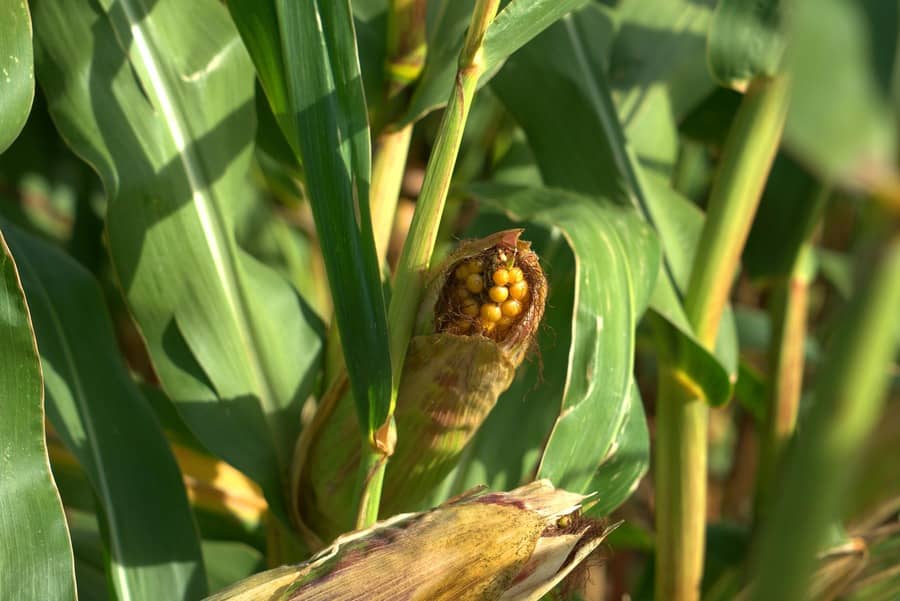The harvest of the Brazilian second crop of corn enters its final stretch and must continue until the end of the month regionally. Growers are selling part of the second crop, so there is better progress in the sales, which allows normal corn trading in the domestic market at this time. However, there is still great difficulty in internal logistics due to very high freight rates, and the strength of the flow at the moment is still concentrated on the fulfillment of contracts. There is, however, a prevailing bet on increasing exports this semester to absorb domestic surpluses and force a high in prices after the harvest. These expectations are generated from the view that the US crop may be losing production, that China would be a major Brazilian buyer, that the exchange rate will be explosive with the elections, and that exports will be very high.
The second crop is advancing into its final stage of the harvest, now more concentrated in the north of Paraná, São Paulo, Minas Gerais, and Goiás. Maranhão and Piauí are at full harvest and with a record second crop, consequently with the same problems, that is, warehouses getting crowded, silo bags being used, and the market looking for immediate liquidity. In the region, exports are doing very well, offering future liquidity for the outflow of the local production. However, sorghum prices are below BRL 60 in the region, and corn is stagnant at BRL 70 on average.
In general, sales progressed better in July due to the need to sell volumes due to the space in warehouses and the need for liquidity. Nothing unusual for a harvest period. On the other hand, it is also clearly noticeable that a significant portion of the second crop is being retained across the country as producers think that prices could rise again to the levels registered in the first half of this year, BRL 80 to 100 in the interior of the states. Undoubtedly, this year is quite different from 2021, when we had record losses in the second crop, an environment of internal washouts and the need to compete bravely with exports. This is not the case in 2022. On the contrary, the flow of exports is the only point that could cause any high in domestic prices. Exaggerated retention is a negative point for this result in exports.
Thus, some variables are being placed in the Brazilian market as items for price highs in the second half of the year. Some may be feasible, others are only hypotheses that lead growers to error. Some indications are:
– China will buy a lot of corn from Brazil. This important consumer is not buying corn, now has the Ukraine option again, but it will be able to make some purchases in Brazil in small volumes to meet the demand in southern China. This is not a bullish point for Brazil;
– Europe has a crop failure. Holland, Portugal and Spain already carry out strong shipments in Brazil and Argentina, and, therefore, this movement is already at the high premiums of this year and in the excellent flow of Brazilian shipments;
– The US crop is in its final phase, we do not think there are signs of a big failure that jeopardizes the short-term export potential in a crop that starts to be reaped next month. The US harvest is a factor of pressure on the CBOT;
– The exchange rate is indeed a fundamental variable in the second half of the year and that may bring surprises to the formation of prices at ports, depending on the electoral result;
– There are no sudden changes in the global and national demand to reveal future corn shortages.
Exports have really had a great start. The line-up now accumulates 16.9 million tons committed to exports, and July had effective shipments of 5.7 million tons, well above the Secex registrations. This difference will appear in the Secex numbers later on. Therefore, for the target of 37 million tons in the business year, 20 million tons are yet to be shipped until January. A number that seems entirely possible to achieve in this business year. The question really lies in this combination of exchange rate, US harvest, and the selling decision by growers to generate an environment of good exports from October onwards. Perhaps, the expiration of domestic debt on September 30 can contribute to this improved domestic supply.
The planting of the 22/23 summer crop began in the far west of Rio Grande do Sul. With a warm winter and rain in southern Brazil, planting conditions are favorable. However, these very high temperatures kept the population of corn leafhoppers high, and now the early germinated crops have a high infestation of this pest that strongly affects productivity. There should be redoubled attention to the summer crop with this regional condition.
Follow the Safras Agency on our website. Also follow us on our Instagram, Twitter and SAFRAS TV and stay on top of the main agribusiness news!
Copyright 2022 – SAFRAS Latam

